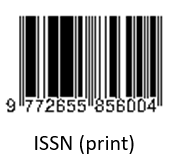Smoothing Module for Optimization Cranium Segmentation Using 3D Slicer
(1) Faculty Science & Technology, Sanata Dharma University
(2) Department of Anatomy, Faculty of Medicine, Public Health and Nursing, Universitas Gadjah Mada, Yogyakarta, Indonesia
(3) Department of Mechanical and Industrial Engineering, Universitas Gadjah Mada, Yogyakarta, Indonesia
(4) Department of Radiology, Faculty of Medicine, Public Health and Nursing, Yogyakarta, Indonesia
(5) Faculty Science & Technology, Sanata Dharma University
(*) Corresponding Author
Abstract
Full Text:
PDFReferences
K. Sugand, P. Abrahams, and A. Khurana, The anatomy of anatomy: A review for its modernization, Anat Sci Ed, (2010).
Biasutto SN et al., Human bodies to teach anatomy: importance and procurement—experience with cadaver donation, (2014).
M. M. Romi, N. Arfian, and D. C. R. Sari, Is Cadaver Still Needed in Medical Education?, JPKI, 8 (3) (2019) 105.
X. Zhang, K. Zhang, Q. Pan, and J. Chang, Three-dimensional reconstruction of medical images based on 3D slicer, J., complex., health sci., 2 (1) (2019) 1–12.
A. AlHadidi, L. H. Cevidanes, B. Paniagua, R. Cook, F. Festy, and D. Tyndall, 3D quantification of mandibular asymmetry using the SPHARM-PDM tool box, Int J CARS, 7 (2) (2012) 265–271.
Djoko Kuswanto and A. Tontowi, Development of Additive Manufacturing Methods for Reconstruction and Redesign Cranial Bone Defects in Indonesia, (2014).
A. Fedorov et al., 3D Slicer as an image computing platform for the Quantitative Imaging Network, Magnetic Resonance Imaging, 30 (9) (2012) 1323–1341.
G. A. Dyaksa, N. Arfian, and L. Choridah, Development of Cranium 3dimension-Puzzle Products Using 3D Printing, (2020).
C. Pinter, A. Lasso, and G. Fichtinger, Polymorph segmentation representation for medical image computing, Computer Methods and Programs in Biomedicine, 171 (2019) 19–26.
DOI: https://doi.org/10.24071/ijasst.v5i1.6300
Refbacks
Publisher : Faculty of Science and Technology
Society/Institution : Sanata Dharma University

This work is licensed under a Creative Commons Attribution 4.0 International License.











